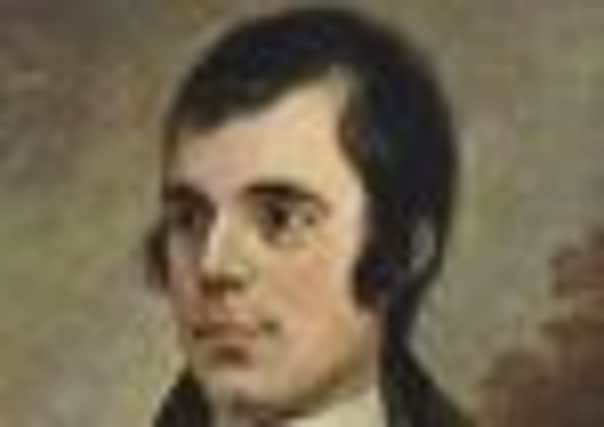Burns’ secret friendship with actress revealed


An unpublished letter, written by the Bard two years before his death – and until now kept in an unidentified family’s private archive – has been unearthed, pointing to a new woman in the life of Burns.
It has revealed for the first time a friendship, perhaps platonic, between the Ploughman poet and Elizabeth Kemble, whose family were regarded as the greatest acting dynasty of the 18th century. They owned theatres in Aberdeen in Edinburgh.
Advertisement
Hide AdExcited Burns scholars, who have confirmed the two-page letter is genuine, believe he was so taken with the 31-year-old actress that he entrusted her with a copy of the famous Glenriddell Manuscript – the two-volume collection of Burns’ manuscripts made for his friend and benefactor Captain Robert Riddell.
One extract from the letter, which is made public today to coincide with Burns Day, the anniversary of his birth in 1759, reads: “As being in the secret is an enviable business even where the secret is of no importance, I venture to send you a Manuscript of mine which has very little other value than its being a private thing.
“All I have to ask of you is, lay the book under lock & key, when you go out, as you will easily believe that I do not wish to expose such a thing to the random perusal of Chance.”
The discovery was made as part of the “Enlightened Burns” project, paid for by the Heritage Lottery Fund, which looked at his links with radical individuals and organisations during the Scottish Enlightenment.
It is being spearheaded by Aberdeen-based Burns scholar Helena Anderson Wright, who said: “It is quite remarkable that over 200 years after Burns’ death, a find like this is still possible. Now that we have had it authenticated, we are delighted to share this letter with the world. There is still a mystery surrounding its complete interpretation which will no doubt be hotly debated by academics for years to come.”
She said the letter had been discovered during their research in the private archive of a family who did not wish to be named.
Advertisement
Hide AdMs Anderson Wright said it was written in October 1794, after the poet met Ms Kemble. He had watched her perform at the Theatre Royal in Dumfries.
She said: “This not a random letter. He was clearly letting her look at something that was very precious. Clearly he was sending her a copy of Glenriddell Manuscript. And there was probably other correspondence as well between them that we have lost.
Advertisement
Hide Ad“He clearly held her in high enough esteem to give her a look at the Glenriddell Manuscript which is quite exciting really. Burns was a radical, Riddell was a radical and Kemble was a radical. There are fantastic links going on there.”
Asked if the letter pointed to love affair about which scholars have, until now, known nothing, Ms Anderson Wright replied: “I couldn’t possibly comment.”
However, she said: “There is more information – another two manuscripts – still to be made public, and I am very excited about that.”
Colin McLean, head of the Heritage Lottery Fund, said: “We never for a moment anticipated a discovery such as this.
“Robert Burns is one of the most celebrated figures in Scottish culture. His enduring legacy and humanitarian values have introduced people in all corners of the world to Scotland’s heritage, the Scots language and the unique living tradition of the Burns Supper. This letter gives us a glimpse into a part of his life, which until now was unknown, as we piece together our understanding of the man.”
A spokeswoman for the Heritage Lottery Fund said: “The letter has been authenticated both forensically and by an international Burns expert.”
Advertisement
Hide AdThe Enlightened Burns book, which contains the letter, will go on sale next month.
The Bard’s love life? It’s complicated
Were Robert Burns alive today, his relationship status on Facebook would definitely have been listed as “it’s complicated”.
Advertisement
Hide AdThe poet’s first child was born in 1785 to his mother’s servant Elizabeth Paton, while Burns was already involved in a relationship with Jean Armour, below. The following year, Armour gave birth to twins, and she was sent away in disgrace to live with relatives.
The pair eventually married in 1788 and she went on to give birth to nine of his children, though only three lived past infancy.
Even before he married Armour, however, Burns became smitten with Mary Campbell, the woman to whom he dedicated a number of poems, including “Highland Lassie O”. Other of his songs suggest he wished to emigrate to Jamaica with her.
Burns and Campbell are believed to have undergone an informal marriage ceremony at the Water of Fail in 1786, but by the end of the year she had died of typhus, leaving Burns to seek romantic comfort with Armour again.